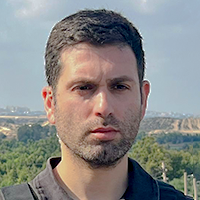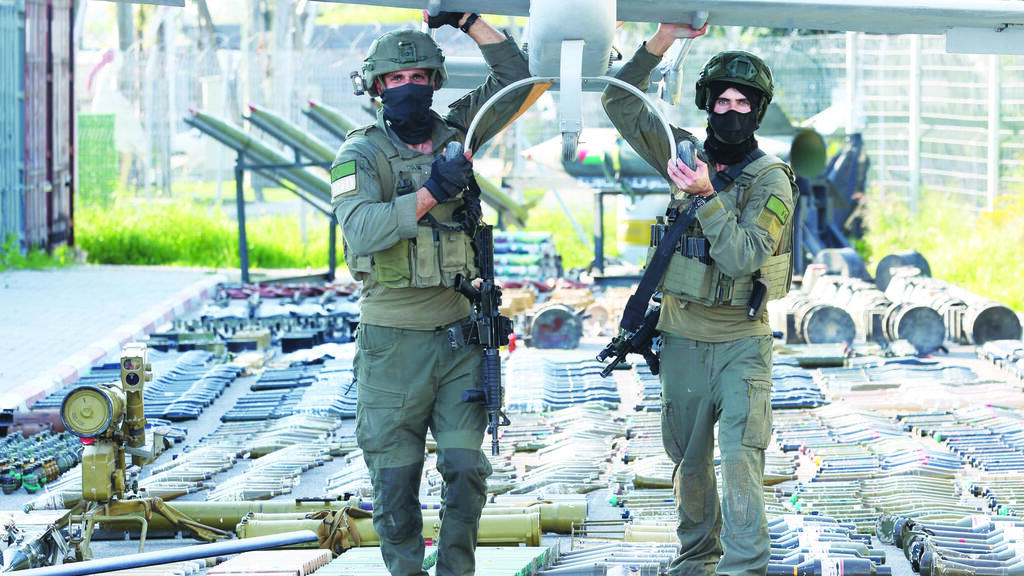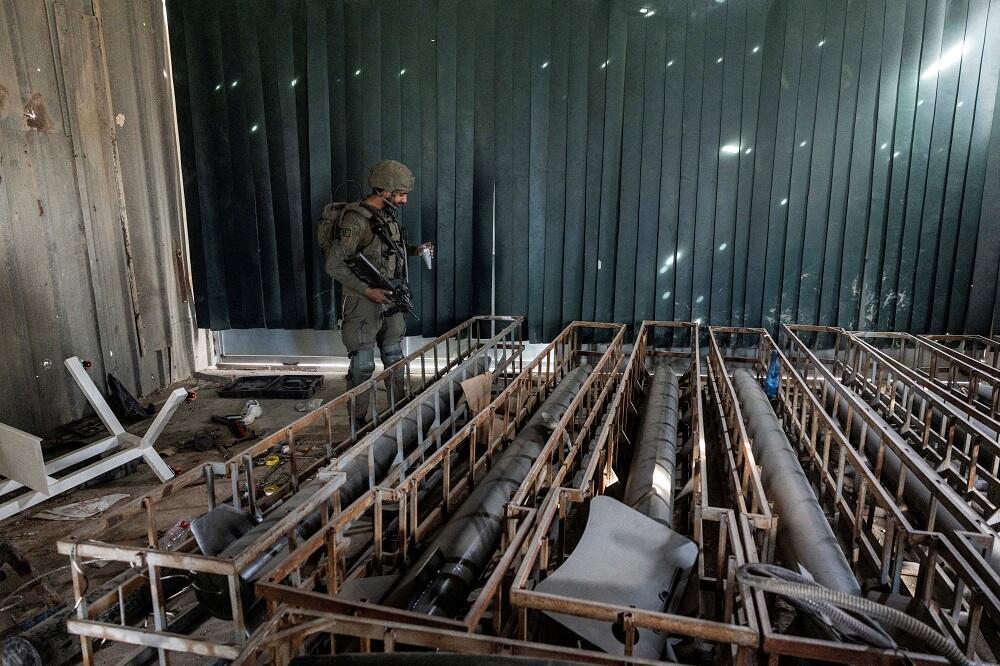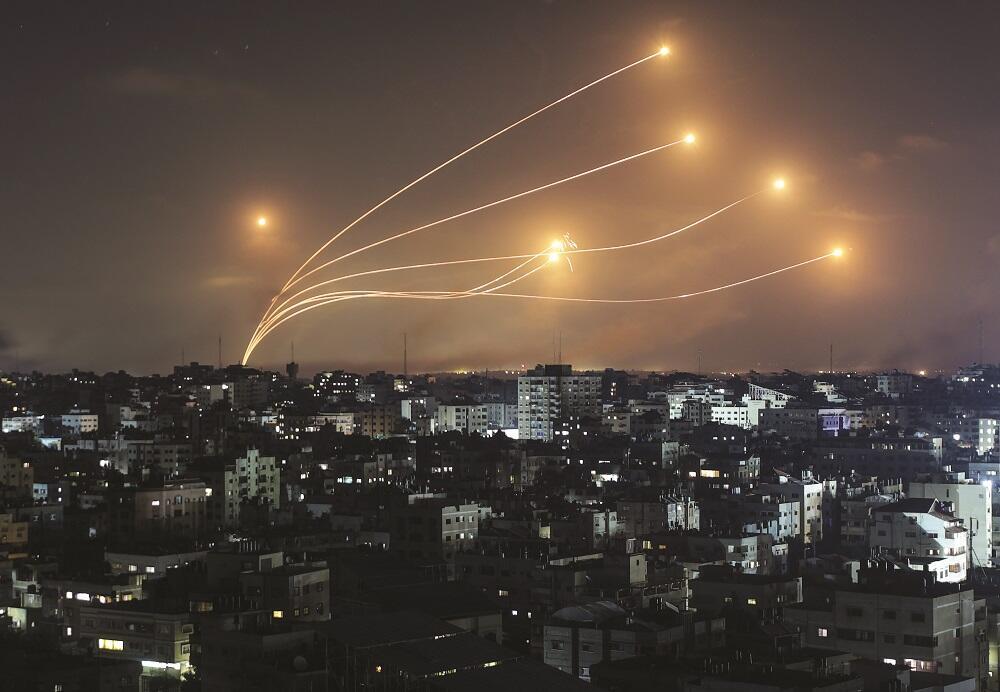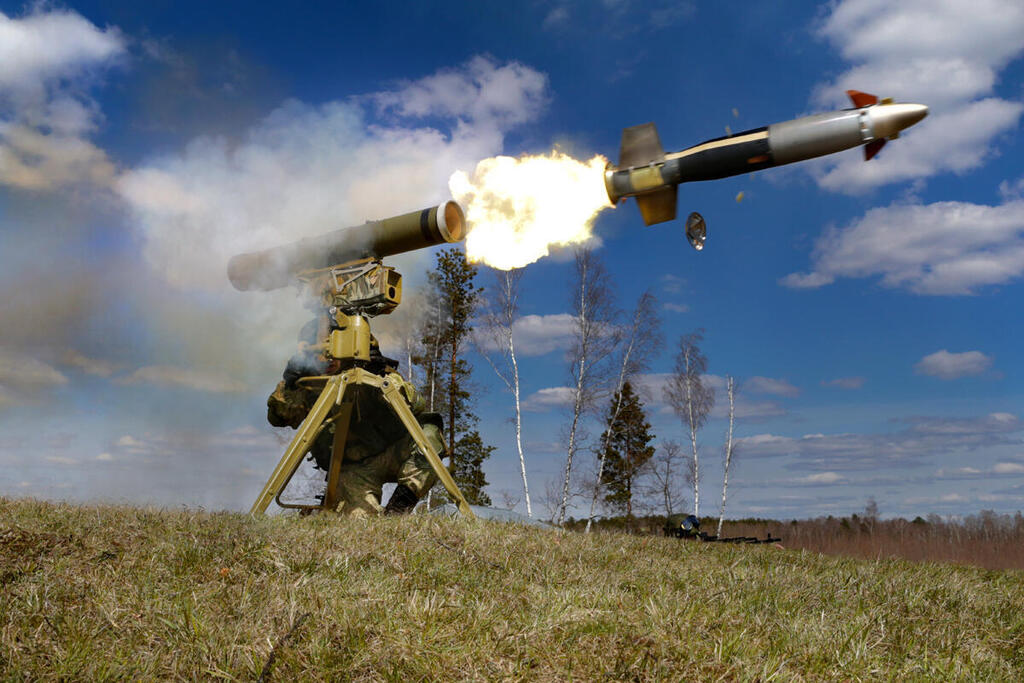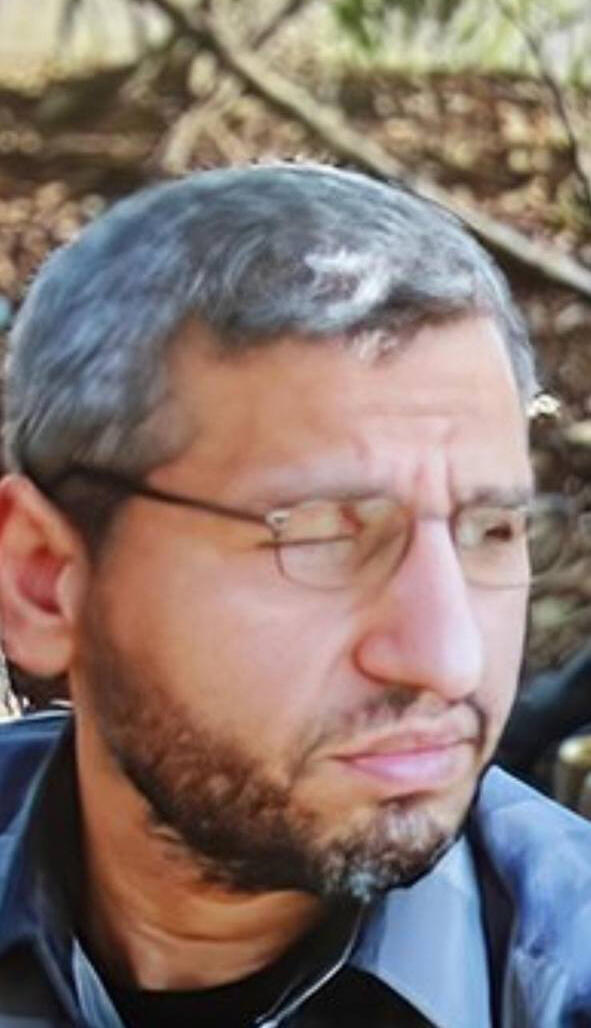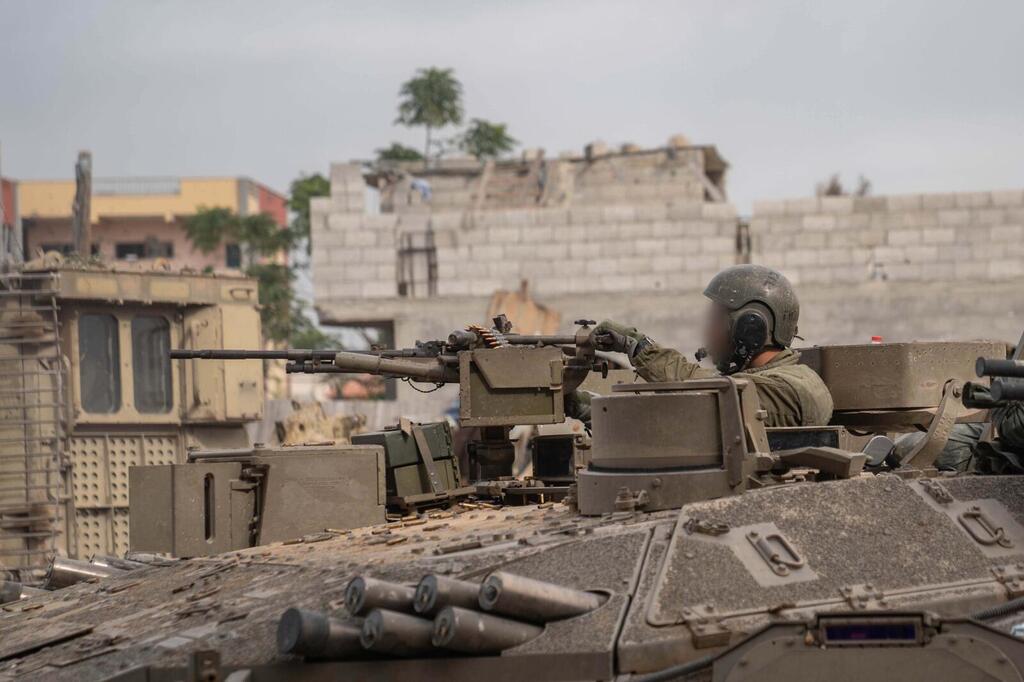This incident occurred during the tenth night of the ground offensive in Gaza. Major Aviv, leading a platoon in the Shaked Battalion of Givati, arrived to secure a street on the outskirts of the coastal town of Al-Attara, situated to the north of the upscale Rimal neighborhood. While advancing, Aviv surveyed the area from the APC and noticed a specific house that raised his suspicions. This three-story house was located next to an abandoned children's park, a typical location where Hamas tends to conceal its assets.
Read more:
Aviv gave the order to "fire a missile" at the building. The missile jolted the structure, but as the smoke dissipated, it became evident that the area was filled with egg cartons, dense sponges, and tightly packed wooden boards for sound insulation. It was clear that someone was intent on ensuring that no noise could be heard inside or outside the building. But what kind of noise? And why?
He directed his fighters to provide cover as he entered. Initially, everything appeared to be a standard Gaza residential home. "You see one floor in the home of a regular family, with children's rooms, a living room, and a kitchen," he described. However, on the upper floors, he discovered something entirely different: "I identified a type of entrance to an entire industrial plant, most of which extended underground through concealed passages and an elevator that descended deep below ground. I quickly realized that I had opened Pandora's box," he says.
"There were 3D printers; some advanced military drones, including black ones; military diving equipment, manuals with codes, an explosives lab. And these were just located in the upper part of the plant, within the residential building. It was a serious facility, not something for someone to dabble in."
Aviv promptly called for special forces, who identified a concealed passage in one of the walls leading underground. This was the first ammunition production facility that the IDF uncovered in Gaza, and intelligence officers who arrived on the scene, entered and exited the tunnel each time with a new discovery. They estimated that eventually, Sinwar's secret weapon factories would begin to be revealed, "but it's like finding a needle in a haystack, especially at first," said one of the intelligence officers.
A considerable amount of time has passed since the remarkable accomplishment, and within the Southern Command, it became apparent that it was just a small part of a much larger picture: the facility uncovered by the vigilant Givati officer was merely one among nearly a hundred extensive manufacturing sites dispersed beneath the entire Gaza Strip. Major Aviv himself sustained serious injuries ten days later and has been recuperating since.
Nevertheless, it is evident to everyone that his astute suspicions triggered the initial chain of events in one of the IDF's primary achievements in the war: the exposure of the most closely guarded secret of the military commander of Hamas, Mohammed Deif - an expansive military infrastructure that has provided and bolstered Hamas' militant forces.
Around 30 militants were killed in this manufacturing facility. However, this, as will become apparent, was just a small component of the much larger capability developed.
Thus far, the IDF has dismantled roughly 60 ammunition production facilities and approximately 20 more facilities that have been uncovered, are being investigated and intelligence found in them is gathered. The wealth of information from all these facilities, some of which is being disclosed here for the first time, exposes the multi-faceted weapon production that has flourished in recent years right under Israel's nose.
Saeed (a pseudonym) is one of many workers in Hamas' weapons industry, many of whom have been apprehended and detained by the IDF. In his thirties and a father of four, he resides in the town of Al-Bureij in the heart of the Strip. "I woke up early every morning for prayer, and at 7:00, a car would pick me up for work in the extensive industrial area along the Salah al-Din road," he said during his interrogation.
"We arrived at 8:00, entered one of the numerous workshops and garages in the industrial zone filled with trucks. It was challenging to discern the purpose of each (referring to which trucks go where), as they genuinely operated as regular factories in this area. However, from our facility, a concealed door led to the main subterranean work area. We left our phones at home, and naturally, taking photos or being photographed at work was prohibited."
So they worked underground with all the smoke and chemicals?
"Ventilation ducts were notably scarce, likely to avoid leaving obvious signs for aerial surveillance. The work conditions were challenging, with few ventilators, and gas masks were provided, for instance, if they were producing small rubber boats for Hamas' naval commando or mixing materials to enhance the explosive substances' volume.
"It was not a pleasant working environment, and some suffered burns and were involved in work-related accidents, of which we were aware. For example, a few years ago, there was an explosion and fire that persisted for several hours from the underground near Shijayah. We believe it was the result of some kind of experiment or development in the underground space.
Saeed says he worked until 3 PM six days a week having Friday and Ramadan off. The workers had a mess hall on location, spaces to rest in and even small rooms for prayers. Despite the risk of mishaps and injuries, there was no ambulance nearby or even a paramedic. "there was barely a first aid kit," he says.
He was not allowed to move into other production areas, so that he would not be exposed to workers and their bosses. "The workers in the underground chambers could have been his neighbors and friends or even his brothers, for all he knew," an intelligence official says. "After they were done in the afternoon, many would move on to their second job to mask the fact that they were employed by Hamas. Some would work double and triple shifts in the production of weapons, including at night, near machines and ovens that could not be turned off. They were given strict procedures to follow and codes telling them when not to come to work - in case of a security risk of a round of fighting."
Hamas named production areas after senior members of the weapons effort, who were killed by Israel over the years, to motivate the workers. When IDF forces entered these facilities, they found everything frozen in time: the machines were waiting for another workday, some of the ventilators were working, and strong odors persisted. "It took us a day or two to ventilate these facilities, to prevent endangering our soldiers," the intelligence officer says.
The largest weapon manufacturing facility found by the IDF thus far was discovered in central Gaza. At the entrance to its reception hall, workers waited underground wearing flip-flops and white smocks. The area was brightly lit with neon lights, and safety instructions were hung on the walls.
During production, quality control officers would move among the workers to inspect the output, collect samples and provide professional feedback. The Hamas' weapon factories were compartmentalized into purposeful separate production rooms underground.
As the weapon-building projects became more critical - such as with long-range rockets capable of reaching Haifa - the production rooms were dug deeper underground, to ensure they would remain undetected. Each facility, with its numerous rooms, was scattered within a radius of hundreds of meters beneath a typical residential neighborhood. A network of tunnels connected the production rooms, some of which had rails and carts for transporting products and raw materials. The sophistication of some of the production centers surprised IDF officers.
The extensive production was kept secret under the leadership of Deif. He appeared to establish three non-negotiable principles: 1. Wherever feasible, prioritize internal weapon production instead of relying on smuggling. 2. The quantity of arms is preferred over quality. 3. Distribute all production facilities lengthwise and widthwise across the Strip.
The rationale behind the first principle - favoring independent production over smuggling - is evident. Israel successfully foiled numerous attempts to smuggle weapons into Gaza and significantly bolstered surveillance of the remaining overland and underground smuggling routes. This doesn't imply that Hamas didn't manage to smuggle armaments, but the majority of the smuggling took place through less conspicuous means, which Israel likely found convenient to overlook as they didn't include what is commonly referred to as "game-changing weapons."
The bulk of the smuggling occurred in the past decade, a period during which Israel was mired in continuous election cycles, and the IDF was primarily focused on preventing sophisticated weapons from reaching Hezbollah.
Hamas turned the smuggling routes from Rafah into highways for the weapons left over from the Syrian civil war, mainly RPG-7 launchers, primarily of North Korean or Russian origin, and PK machine guns.
All of this enabled Deif to direct his production efforts toward explosive ordnance. Foremost among these were the rockets intended for launching at Israel, but the inventory also included relatively high-quality explosive charges of various types, particularly shaped charges used to attach to armored vehicles and structures, as well as anti-tank missiles, which Hamas repurposed for dual-use to enhance penetration of armored vehicles and increase their explosive power.
Some of these rockets were manufactured by Hamas as particularly destructive magnetic attachment charges that were used during the October 7 massacre and had caused much of the extensive fire damage there. "We observed such charges attached to vehicles," says an officer in the Engineering Corps who had been in the border area communities. "The homemade special charge incinerated and destroyed the vehicles along with their occupants."
What do you do after analyzing the munitions?
"The majority of the weapons are intended for destruction. Standard weapons are stored in military warehouses as spoils," he says adding that there were also M-16 rifles with their serial number removed, likely stolen from IDF bases and brought into Gaza. He points to four American military personnel examining Hamas' cone-shaped black explosives, known as Qassam. Major G, a graduate of the Yahalom Engineering unit, says that the systematic production has attracted global interest, with research missions from foreign armies coming to inspect the findings.
Regarding the general principles of the Hamas weapons industry, the second of Deif's rules prioritizes a large quantity of poor-quality weapons over a few high-quality ones. Major G says in disassembling Grad rockets with a range of 40 km they found grass inside, intended to mix with the explosives and thicken them. He also says that he and others, demolished grenades by the thousands, with many being destroyed still in Gaza due to their low standard and high failure rates. Fortunately, many of these grenades, thrown into bomb shelters where civilians were hiding on October 7, did not explode.
The third Deif principle was the need to disperse production centers and maintain absolute secrecy. Most weapons production facilities were discovered underground, with supervisors occupying rooms located beneath mosques or schools to provide protection against bombing. Intelligence officers note the absence of specific factories, such as a 'rocket factory' in Jabaliya or an 'explosive charge factory' in Nuseirat, and describe a sophisticated and extensive industrial chain spread over dozens of kilometers of tunnels and underground workrooms.
According to an assessment by Military Intelligence, before the war, about 80% of Hamas' explosive weapons were produced in the Strip, at a rate of about 500-400 rockets and thousands of explosive charges per month. On the morning of October 7, Hamas had about 12,000 rockets and thousands of explosive charges. The Islamic Jihad, with less developed production centers, had another 6,000 to 8,000 rockets. Most of these rockets had already been launched in the war, were found, or were identified in the area by IDF soldiers and destroyed in the field, with precise intelligence guidance.
Exerting proper effort
Over the years, Hamas' military industry has evolved and developed. At a certain stage, Deif decided that when it comes to rockets, not only are quantities important, but also what they can do, or in one word: accuracy. The IDF estimates that countless launches toward the sea, carried out by the terror organization were also intended to examine a kind of "precision project" for Hamas' missiles, which, although far less advanced than Hezbollah's precision project, serves the same purpose.
In early January, Nahal fighters found a 100-meter-long tunnel in the Daraj neighborhood, leading to a secret facility for the precision of rockets with J-PAS warheads, alongside a missile launcher. The source of this technical knowledge is clear: manuals in Persian were found in the tunnel. The military says that these precision capabilities did not mature, mainly due to Israel's intelligence activity.
The assessment is that Hamas planned to use these precise rockets against strategic targets, such as power stations and possibly even naval assets. Hamas did succeed in producing a very small quantity of unmanned underwater vehicles (UUVs), similar to torpedoes, that are relatively accurate and highly explosive. About ten of them were launched in the first week of the war at sensitive sites, but as far as is known, they did not hit. Additional UUVs were identified by the IDF in the Gaza area.
Hamas has another relatively precise weapon, but not of its own manufacture – the Cornet ATGM, which is laser-guided and effective up to a range of about five kilometers. A version of the missile, originally developed by Russia, is also produced in Iran and smuggled into the Strip but apparently in only small quantities. Only a few dozen such missiles were discovered, and during the war, there were isolated attempts by Hamas to launch the Cornet, all of which were thwarted and ended with the elimination of the launch cell.
Over the years, the IDF invested efforts in thwarting Hamas' precision project. These efforts were primarily intelligence-based, and in the absence of ground maneuvering – through aerial activity. The fact that Hamas did not succeed in developing its missile accuracy is a sign that this policy was correct – but it is impossible to destroy all of Hamas' UUV industry from the air alone. Deif, who repeatedly suffered setbacks in his precision project, returned to thinking in terms of quantities.
More than 20 different types of "dumb" rockets were produced in his factories, from the most basic types built from irrigation pipes to the M-250 rocket, which can reach Jerusalem and the north. Hamas' firing method, demonstrated well in the October 7 attack, was also "quantity-based": firing a large number of rockets, sometimes hundreds in a single barrage, toward a single area, in the hope that at least some of them will manage to bypass the Iron Dome missile defense system and reach the target. Another method using low-altitude launches was attempted, in the hope of reducing Iron Dome's ability to reach them. Both methods failed.
Hamas' aerial industry
In the meantime, in Gaza, the IDF is actively dismantling Deif's armament manufacturing capabilities. Lt. Col. Roee explains that in 80% of the cases where facilities were found, the information came from a field intelligence unit obtained from raids and from maps and documents found.
They found manufacturing facilities when they raided a Hamas police station and discovered workshops for producing large-caliber ammunition with a diameter of 0.5, and dust compression for bullets. Lt. Col. Roee also says that even what they found on the street was hidden behind double and reinforced doors, to prevent accidental entry and injury. He expressed a sense of accomplishment each time they found a place like this, likening it to being the needle found in a haystack of destruction.
One such find was Hamas' "air industry." A few weeks after the start of the ground offensive, fighters located an advanced manufacturing facility for suicide UAVs in the Shati camp. The "source" was not Iranian this time; Hamas' UAVs are remarkably similar to the Israeli "Sky Rider" and likely reverse-engineered. Some of them, alongside the camera and transmitter, also contained an explosive charge weighing five to seven kilograms.
They also adapted relatively simple capabilities from some of Israel's large drones that fell in their territory to alter a large civilian drone, capable of carrying 120 lbs. to one with military use. The IDF identified hundreds of such drones belonging to Hamas in the Strip, some even used to drop precise explosive charges placed as warheads for RPG. but this ability was eliminated early on in the offensive.
$50 million from Iran annually
The physical destruction of these weapons facilities is not sufficient, and it will always be possible to obtain more raw materials, components, and explosives. Therefore, the IDF also focuses on targeting Hamas' senior weapons engineers. "Take the fisherman's net, and he will be hungry for a day," says Major J from the enemy's weapons research institute; "Take away his knowledge of fishing, and he will be hungry for 20 years."
Delving into the weapon production system of the terror organization reveals how it has strengthened over the years. The senior Hamas engineer in charge of development and production is in his 40s and considered among the top ten officials, answering directly to Deif.
Iran, provides most of the budget for Hamas's military purposes, to the tune of about $50 million per year but less than the $700 million received by Nasrallah. Hamas manages to obtain many more millions through donations and investments, in convoluted ways and through elusive channels that are difficult to trace.
And the priority lists were clear: tunnels and weapons. According to security system data, the estimated cost for a tunnel meter is $200, meaning that every kilometer of a tunnel costs Hamas about $200,000, not including additional infrastructure, such as cooling, fuel, gas, and electricity, which in the case of weapons production centers are of course critical. The shaft leading to these tunnels costs about $50,000, of course, varies according to the excavation and its depth. The weapons themselves, produced in these tunnels, are relatively inexpensive. The production cost of a short-range rocket is estimated at about $150, for a medium-range rocket $250, and the production of long-range rockets costs Hamas between $500 and $700.
The knowledge also comes from Iran, but unlike money, it is more complicated. To produce a rocket, a manual or a YouTube video is not enough. "It is impossible to learn to develop means that we found in Gaza just from correspondence," says an intelligence officer. But in recent years, only a small number of weapons engineers have been able to travel to Iran and back safely.
As a result, knowledge is passed on indirectly. "If we were to show a Rafael engineer the safety protocols they developed for weapons, he would be appalled," explains one officer. "They compromised on safety for their security and extensively dealt with chemical materials. In one of the facilities, we found a list of disabled people hurt in their missile production industry, including dozens who lost their sites and others who lost limbs."
"They also resorted to a lot of improvisation," adds another officer. "For a significant portion of the production process, where machine oil or lubricant was required, they used cooking oil, the kind you can buy at a pharmacy, but in large quantities. This was suitable for their missile launchers. So, they simply cultivated sunflower plants in the factories and produced oils from them to maintain industrial self-sufficiency. They also made extensive use of regular salt for rocket fuel, metal pipes, and fiberglass, which are dual-use materials that have made their way into the Strip over the years."
What surprised you after years of watching Hamas build up militarily?
"The depths of the facilities underground and the scope of the workshops. We had good intelligence, alongside the complexity of such sites beneath residential neighborhoods. The level of secrecy was so intense that Hamas operatives who were training above these facilities had no knowledge of what was beneath the surface. Workers would enter from one location and exit through a different point within the neighborhood. Within the expansive production halls, we discovered the presence of overhead cranes and elevators, within the wide industrial tunnels - all concealed underground. The most noisy machinery was operated from the deepest chambers."
Aerial bombardment just doesn't cut it
When the IDF says it struck a Hamas underground weapons production facility it typically refers to a single room at most. The military would identify and clear the street above the target during the middle of the night, and then employ specialized tunnel-busting bombs in an attempt to penetrate it successfully but even then there was no guarantee of success.
"That is why our focus was on the 'bottlenecks,' the machinery used for mixing explosive materials, and the most critical components," explains the intelligence officer. "The forces we encountered in Gaza said that the most resistance from Hamas operatives was encountered above these sites. Even high-ranking operatives hid inside the production facilities until they fled, well aware that these were the most secretive places in Gaza."



